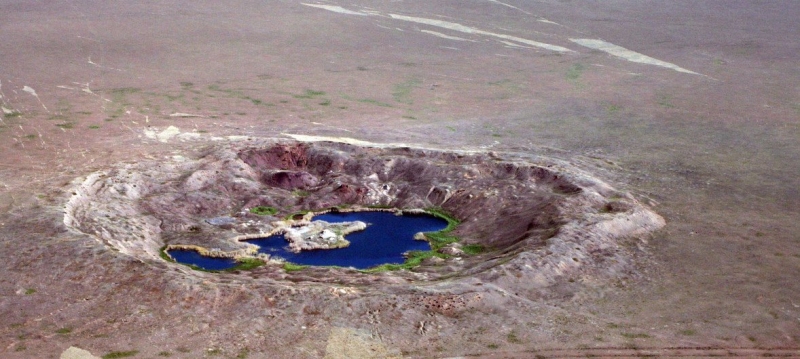
Semipalatinsk test site in Kazakhstan, where the USSR conducted nuclear weapons tests There is a limit to everything: to end nuclear testing once and for all Dennis Francis, Robert Floyd Peace and Security
In 2009, the UN General Assembly proclaimed August 29 as the International Day against Nuclear Tests. On the occasion of the Day, Dennis Francis, President of the 78th session of the UN General Assembly, and Robert Floyd, Executive Secretary of the Comprehensive Nuclear-Test-Ban Treaty Organization, prepared a column, which we publish in full.
This date refers to the events of 1991, when the Semipalatinsk nuclear test site in modern-day Kazakhstan was officially closed. At this test site alone, 456 nuclear tests were carried out between 1949 and 1989.
Between 1954 and 1984, an average of at least one nuclear test was carried out every week around the world, most of which were far more powerful than the bomb dropped on Hiroshima. Nuclear weapons were detonated in the air. On the ground and underground. At sea.
The radiation from these test explosions spread across the planet, penetrating deep into the environment. Even today, it can be detected and measured. Traces of it can be found in elephant tusks. In the corals of the Great Barrier Reef. In the deepest ocean trenches.
Meanwhile, nuclear weapons stockpiles grew exponentially. By the early 1980s, there were about 60,000 nuclear weapons in the world, most of which were considerably more powerful than the bombs dropped on Hiroshima and Nagasaki.
Public outrage grew. By the 1960s, it was widely accepted that ending nuclear test explosions would be vital to stopping the development of nuclear weapons and thus promoting nuclear non-proliferation and disarmament. In the preamble to the 1968 Nuclear Non-Proliferation Treaty, the signatories firmly committed to “achieving permanent cessation of all nuclear weapon test explosions.”
But it took nearly thirty years and hundreds more nuclear test explosions before the Comprehensive Nuclear-Test-Ban Treaty (CTBT) was concluded in 1996. It is one of the most important treaties in the world. What a difference it made!
More than two thousand nuclear weapons tests were conducted between 1945 and 1996. There have been fewer than ten in the 28 years since 1996. There have been only six tests this century — all by North Korea.
The Treaty is based on a network of more than 300 scientific monitoring facilities around the world that can quickly detect a nuclear test explosion of much smaller yield than the explosion in Hiroshima and pinpoint the exact location of the test. No state on Earth can test a nuclear weapon without detection.
The CTBT enjoys the support of almost the entire international community. 187 states have signed it and 178 have ratified it. The fact that ten new parties have ratified the Treaty since 2021 demonstrates the global movement against the resumption of nuclear testing, in which small states are especially active.
Despite these successes, the current uncertainty in the international arena weakens the nuclear test ban that the CTBT has made a universally accepted norm. What if nuclear testing resumes, or even if nuclear weapons are used in a conflict? There will be a catastrophic undermining of global trust and international solidarity. A return to the era of uncontrolled nuclear testing will leave no state, no community, and no person on Earth safe.
We often hear that we learn from our mistakes. In this case, let us learn from our successes. The CTBT is the result of excellent diplomatic work combined with the use of cutting-edge technology for the objective benefit of all. It provides transparency and builds trust at a time when transparency and trust seem to be in short supply.
On the International Day against Nuclear Tests, a high-level meeting of the United Nations General Assembly will be convened. In this regard, we call on all States to be prepared to take the bold but principled decisions needed to achieve a final global consensus on the Comprehensive Nuclear-Test-Ban Treaty to end nuclear testing forever. There is a limit to everything.
Ambassador Dennis Francis, President of the Seventy-eighth Session of the United Nations General Assembly
Dr. Robert Floyd, Executive Secretary of the Comprehensive Nuclear-Test-Ban Treaty Organization
